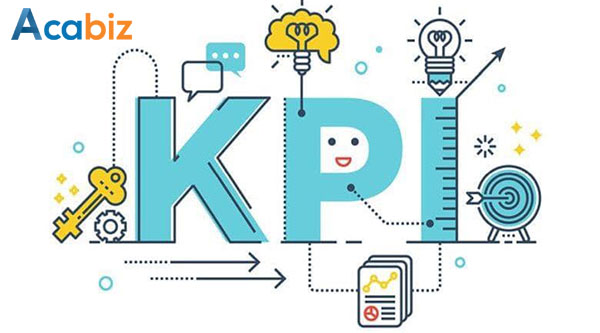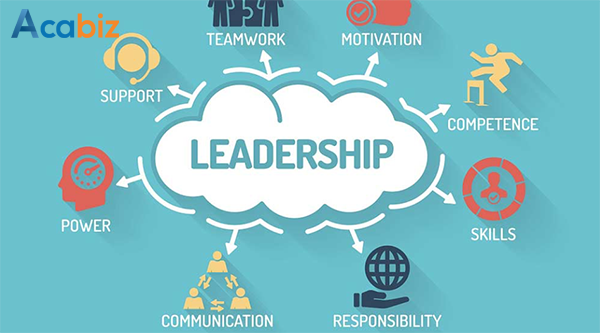In the US, we talked to a friend who has lived in the US for more than 20 years, he works for the R&D center of a large telecommunications company, located in San Jose. In the story, when referring to the American way of working, compared with the Vietnamese in Vietnam, he shared with us a memorable idea. He said, when he first came and started working, he received the job, then he just kept working, partly because of his hard-working nature, partly because he was afraid of losing his job; Losing a job in the US is very stressful! In the end, the work did not bring the results as expected by the Boss. During the meeting, which can be considered as a learning experience for the job he took on, he told his boss: "I did try my best!", which translates to: "I tried my best! ". Hearing that, his boss immediately said: “I respect that, however, your best is not enough! You have to deliver!”,

KPIs and work performance
My friend said that at that time, I didn't really understand it, because according to my familiar thinking, once I did my best, there was nothing more to say. But then through that and a few more things, he gradually understood that it was the value created from the work, what his boss told him to deliver, was what was expected, and the effort or effort was the problem. apparent. In the US for so many years, the lessons from that were in his blood and he is now a senior expert and manages the company's important research projects.
In turn, we think a lot about his story because more or less it forces us to look back. How many times have we told the boss, to the customer, exactly the same sentence that the other guy said to his boss at that time. How many times have we heard our employees report, “I did my best!”. And there are times when I both wonder and want to ask the staff what it's like to be very hard.
It's hard to answer that question; maybe because we know that, we never asked our staff.
Looking back at the business management story, after many experiences at different scales, we completely share the view that it is difficult to measure the efforts of an individual or an organization. What can and should be measured is the result of that effort.
Fortunately for us, the previous managers have learned many lessons and formed a working method that in recent years has become very familiar to Vietnamese businesses, which is the system of key performance indicator (KPI)
Thinking in a slightly "naturalist" way is like that, but looking at the problem more scientifically, the purpose of measurement is to promote the initiative of enterprises in planning, specific goals, focusing on product and service quality, minimizing costs, and empowering management decisions. The purpose of measurement is also to increase productivity and efficiency for the business through goal management and target measurement.

How to measure employee performance?
In today's business environment, it has become very common to discuss goals and criteria for evaluating them. Each individual in the enterprise's apparatus is bound by a number of goals associated with their job and position, and these goals are often measured periodically to ensure that the work does not go astray. Without tools and methods to monitor and evaluate work results against set goals, it would be impossible to know if and when goals will be achieved.
Measurement is necessary; measurement is important. That's right. Now the key question: what to measure. Measuring everything is a seemingly legitimate but desperate desire because the cost of measuring will be extremely high. The right approach is to measure what matters most.
Usually, when a doctor wants to check someone's health, he will start with a vitalisation, which measures blood pressure, heart rate and possibly temperature. These are initial, easily accessible parameters but say a lot about the health of the person being examined at the time. So are businesses. With the right measurements, we can know the health of the business.
Continuing with that metaphor, if a doctor measures blood pressure, heart rate and temperature, what will the administrator measure? In fact, there are many different options for figuring out what parameters to measure, from a process approach to a functional approach. In modern management theory, there is a method of working that has grown to its peak in the past 10 years and is really useful in helping managers identify the most important measured values. ; This method is called the balanced scorecard (BSC) method.
BSC originates from the view that the following four aspects of an enterprise's operations should all be given equal attention, and throughout the course of the business; They are like pillars bound together, relying on each other to make success and sustainable development.
Financial Aspect
At the enterprise-wide level, this is what shareholders expect for financial results, sales, profits, and other metrics. At the level of independent business units, this aspect has the same meaning, it should also reflect the same parameters. For functional parts of the enterprise's organizational structure, this aspect can be viewed from the perspective of the impact on overall performance: helping to increase revenue or reduce costs.
Customer Aspect
Financial targets can only be achieved if the business truly creates value for customers. This aspect will manifest those values. If you go back to the deliver story at the beginning of the article, this is the most obvious place to see what the business delivers to customers.

Evaluate employee performance
Management System and Process Aspect quản
The value that the business creates will reach the customer through a supply chain that includes a series of processes. It is these processes that contribute to the value customers receive and satisfy them. This aspect reflects the quality of the processes, singly or as a whole of the management system.
Learning and Development Aspect
The capacity and internal resources of the enterprise are what managers are most concerned about. It is the ability to learn and develop people that has made the resounding success in business. This aspect reflects the alignment of intangible assets – people, systems and culture – in an effort to enrich the capabilities of the business and thereby strengthen internal forces.
When the business picture is clear about the layout like how to put the problem according to the BSC, the KPIs are the main drawings, overlaying more details on that layout. The question of what measures has an answer, or at least the manager knows where the points can be selected; Just like the doctor knows where to put the stethoscope on the person being examined.
See also other articles:
>> Methods of performance evaluation
>> How to motivate employees effectively
>> The reasons why the boss makes the decision to fire an employee




















